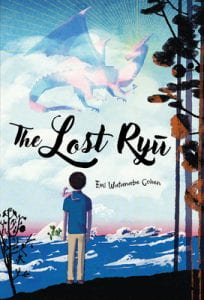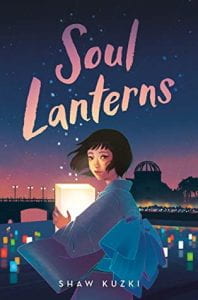 Cohen, Emi Watanabe. The Lost Ryu. Levine Querido, 2022. 978-1-646-14132-6. 200 p. $17.99. Grades 5-8.
Cohen, Emi Watanabe. The Lost Ryu. Levine Querido, 2022. 978-1-646-14132-6. 200 p. $17.99. Grades 5-8.
This book explores an alternate history full of magical realism where dragons or “ryu” are real; some big ryu even helped Japan fight in WWII, but now most big dragons have disappeared. Even though they both care for small family dragons as pets and companions, Kohei and his new friend Isolde want to try to find a “big” dragon and bring back the majestic creatures who were lost after the war. Kohei is also trying to discover more about the father who passed away when he was three and reconnect with his mother and grandfather, who both seem stuck in the past. Will Kohei and Isodle ever discover where the big ryu have gone, and will that discovery help to heal all the terrible scars the war has left on the world?
THOUGHTS: Students who like historical fiction and fantasy will like this imaginative take on friendship, family, and Japanese dragon mythology. Kohei is Japanese, Isolde is Japanese-Jewish, and the story uses their mutual love of dragons to help them deal with the complicated history of Japan, World War II, and the Holocaust. The relationships in this book also show the struggles of children who cope with the trauma suffered by their parents and contain hopeful messages about learning how to move forward after tragedies have happened within a family.
Historical Fiction Erin Faulkner, Cumberland Valley SD

